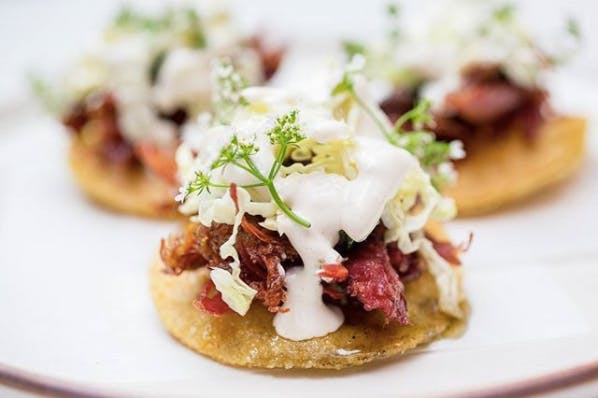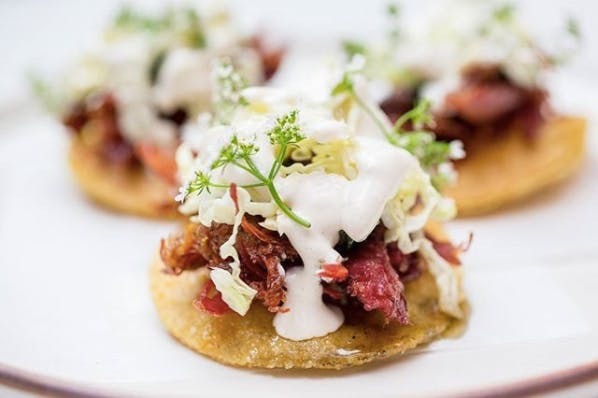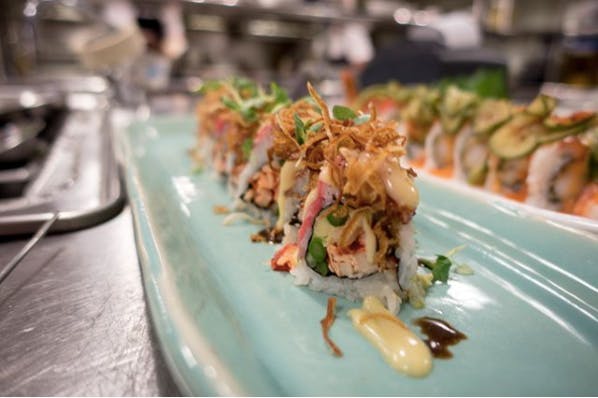The Art of Plating

(Source: Lionfish Modern Coastal Cuisine Instagram feed)
Does a beautifully presented entree really taste better than food haphazardly..
THE ART OF PLATING

(Source: Lionfish Modern Coastal Cuisine Instagram feed)
Does a beautifully presented entree really taste better than food haphazardly spooned onto a plate? If you ask any of the talented chefs at Lionfish Modern Coastal Cuisine, they will give you a resounding yes.
It’s a simple fact: we eat with our eyes first. Beautiful presentation allows you to begin anticipating the flavors of a given dish before you take the first bite, heightening anticipation and the overall dining experience.
The art of beautifully presenting a dish is called “plating” in the restaurant industry, and here, we’d like to take a few minutes to speak about why it matters and some of the tips for how our Chef Jojo Ruiz does it effectively.
What does “plating” mean? In a restaurant setting, “plating” refers to the art of arranging, decorating, and presenting food in a way that improves its aesthetic appeal to the diner when served. While plating is the term given to refer to the finished presentation of the plate of food, there’s much consideration that must go into every aspect of preparation to successfully pull of great plating, from the size of the components on the dish to the type of cut (for meat dishes) to the color and consistency of sauces or toppings.
The secrets of successful plating. Does plating seem like a big mystery to you? While the plates may seem complicated, the art of plating is actually quite simple. Here, we’ll dish (pun intended) on some of the secrets to successful and beautiful plating that we use at Lionfish.
1. Compose the plate as if it’s a piece of art. When a painter creates a piece of artwork, he or she considers the composition of the piece before putting brush to canvas. A chef is no different! He or she will consider the plate as if it is a blank canvas, thinking about what might fill in the space in an interesting way.
In some cases, it might be a minimalist approach, presenting components with plenty of white space around on a square or rectangular plate. Or, it might be a perfectly rounded plate with a central focus. There’s not one approach that is better than another; a chef will have a variety of different plating compositions for various menu items to keep things interesting.
 (Source: Lionfish Modern Coastal Cuisine Facebook page)
(Source: Lionfish Modern Coastal Cuisine Facebook page)
2. Get creative with color. A splash of color can make a plate of food come to life. For instance, on the plate shown above, a cut of meat presented alone could look a little too…well, earth-toned if presented all by itself. However, the addition of vibrant greens not only adds a contrasting texture and flavor to the meal, but an appealing visual element to the plate itself.
 (Source: Lionfish Modern Coastal Cuisine)
(Source: Lionfish Modern Coastal Cuisine)
3. Consider the vessel. In terms of plating, form meets function when it comes to the actual vessel employed for the food in question. First and foremost, a chef must choose a plate or bowl which “works” for a particular dish. For instance, our Spicy Grilled Octopus is served with fermented chile, crispy garlic, marble potatoes, and cilantro aioli. In this case, a shallow bowl works better than a flat plate, as it gives the diner plenty of room to dig in to every ingredient.
4. Don’t make it too tall or wobbly. Sure, a sushi roll stacked sky-high on a plate would look cool. But if it were stacked in such a way, it would be nonsensical. Servers would be prone to spilling it before delivering it to the table; if it didn’t topple, chances are the diner wouldn’t even know where or how to start eating. Chefs shouldn’t become so obsessed with the idea of a dish looking “cool” that it sacrifices the quality of the actual eating experience.

(Source: Lionfish Modern Coastal Cuisine Instagram feed)
5. Employ contrasting textures. A combination of textures on a plate adds excitement to the visual appeal of any dish. For example, our sushi rolls are often garnished on top with a contrasting ingredient to add not only an incredible flavor element but also to add a visually appealing texture. In the above photo, you can see how the crispy garnish on top makes the rolls exciting and enticing!
 (Source: Lionfish Modern Coastal Cuisine Facebook page)
(Source: Lionfish Modern Coastal Cuisine Facebook page)
6. Create a focal point or points. Using a striking visual element (or multiple elements) on the plate can help create a focal point for the eyes to settle upon. The above photo is a fantastic illustration of this concept. While the rich pink fish is undoubtedly beautiful, it acts more like a visual pattern on the plate. However, by adding tiny garnish atop each piece, all of a sudden the dish has plenty of visual intrigue. The eyes go right to these little focal points, which draw the eye down to the beautiful, fresh fish. It heightens the overall experience and makes the plate more interesting.
7. Garnish with care. Yes, having a focal point or a splash of color via garnish can increase the visual appeal of a dish. However, garnishes must be chosen with care. Not only are they employed for visual appeal, but ideally, they should work with the flavors of the dish. For instance, while mint leaves might be lovely, they’re not going to taste great on top of our wild mushroom and potato gnocchi; the flavors simply wouldn’t make sense.
8. Be consistent. When creating a style of plating a dish, a chef might experiment with the composition. However, once he or she has settled on a style of plating, it’s important to be consistent in composing the dish in the same style from then on. Not only does this act as “branding” for the dish, but if someone loves it and orders it again, they’ll be looking forward to the presentation they loved last time!
Come enjoy both the visual appeal and the finished flavor of the delectable dishes on our menu! We hope to see you soon at Lionfish Modern Coastal Cuisine for some of the best coastal cuisine in San Diego!
What do you think makes a plate visually appealing?
